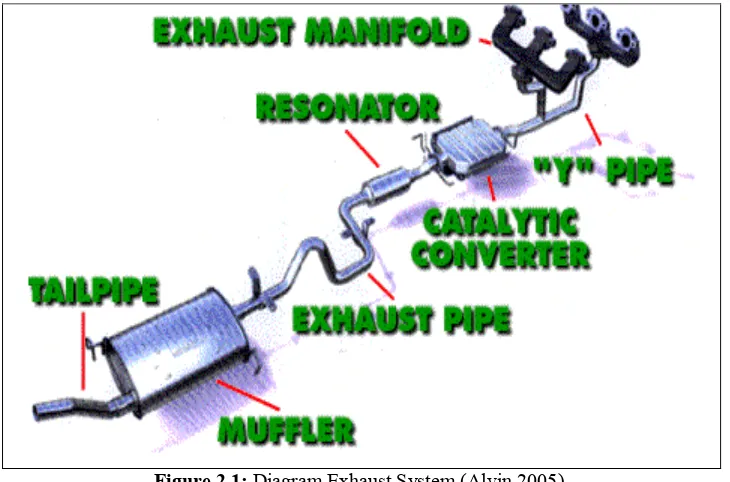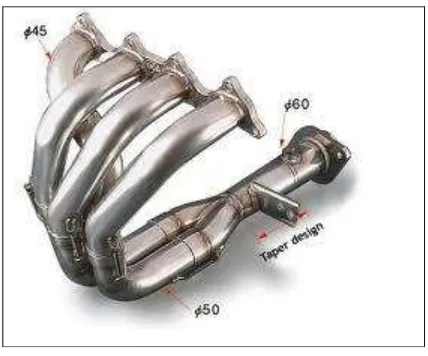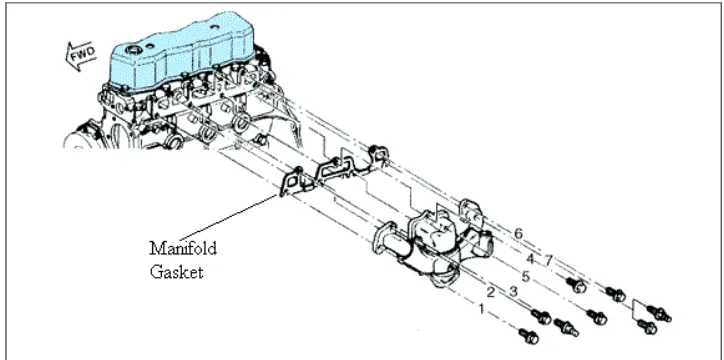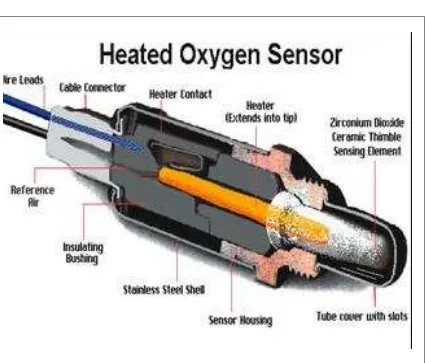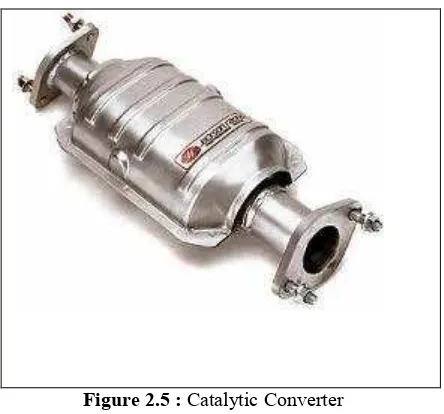UNIVERSITI TEKNIKAL MALAYSIA MELAKA
BORANG PENGESAHAN STATUS LAPORAN PROJEK SARJANA MUDA
TAJUK: Design And Analysis of Muffler of Car Exhaust System Based On Solidwork Express.
SESI PENGAJIAN: 20010/11 Semester 2
Saya KHAIRUL HAFIZ BIN MEGAT BOHRI
mengaku membenarkan Laporan PSM ini disimpan di Perpustakaan Universiti Teknikal Malaysia Melaka (UTeM) dengan syarat-syarat kegunaan seperti berikut: 1. Laporan PSM adalah hak milik Universiti Teknikal Malaysia Melaka dan penulis. 2. Perpustakaan Universiti Teknikal Malaysia Melaka dibenarkan membuat salinan
untuk tujuan pengajian sahaja dengan izin penulis.
3. Perpustakaan dibenarkan membuat salinan laporan PSM ini sebagai bahan pertukaran antara institusi pengajian tinggi. atau kepentingan Malaysia yang termaktub di dalam AKTA RAHSIA RASMI 1972)
(Mengandungi maklumat TERHAD yang telah ditentukan oleh organisasi/badan di mana penyelidikan dijalankan)
Alamat Tetap:
i
ABSTRACT
ii
ABSTRAK
iii
DECLARATION
I hereby, declared this report entitled “Design and analysis of muffler of car exhaust system based on solidwork express” is the result of my own research except as cited
in references.
Signature : ………...
Author’s name : KHAIRUL HAFIZ BIN MEGAT BOHRI
iv
ACKNOWLEDGEMENTS
v
2.4.4 The Resonator, Muffler, and Tailpipe 12 2.4.5 Exhaust Pipe 15
2.5 Methods on How to Improve Efficiency and Power 16
2.5.1 Dual Exhaust System 18
vi
2.5.4 Mandrel Bent Versus Crush Bent Piping 19
2.5.5 Straight Through Versus Reverse Flow Mufflers 19 2.6 Composition of Automotive Exhaust System and Material 20
2.6.1 Exhaust Manifold 21
2.6.2 Front Pipe 22
2.6.3 Flexible Pipe 24
2.6.4 Catalytic Converter (catalyst carrier and shell) 24
2.6.5 Center Pipe 26
2.6.6 Main Muffler 27
2.6.7 Tail End Pipe 28
2.7 History and Future Trend of Material for Automotive Exhaust System 28
2.7.1 Exhaust Manifold 28
2.7.2 Main Muffler 34
3. METHODOLOGY
3.1 Introduction 38
3.2 Process Flow Chart 39
3.3 Identification of Problem Statement 40
3.4 Objectives and Scope of Research 40
4.2 Exhaust Muffler Design Principles 41
4.3 Design Procedures 43
4.4 Aeroacousic Of Exhaust Muffler 49
4.5 Sound Waves 50
4.6 Back Pressure 51
4.7 Exhaust Noise 51
4.8 Muffler Design Requirements 52
4.9 Acoustic And Back Pressure Considerations 52
vii
4.11 Backpressure And Other Types Of Muffler 56
5. RESULT AND DICUSSION
5.1 Analysis of Current Muffler 58
5.2 Proposed New Design of Muffler 61
5.3 Analysis The New Design of Muffler 62
5.4 Possible Muffler Design 63
6. CONCLUSION AND RECOMMENDATION
6.1 Conclusion 69
6.2 Recommendation 70
REFERENCES 71
viii
LIST OF TABLES
2.1 Exhaust System Component and Main Material 23
2.2 Composition Of Exhaust Gas Condensate 27
2.3 Composition Of Simulative Condensate
ix
2.9 Three-Way Catalytic Converter Operation 11
2.10 Tailpipe 12
2.16 Automotive Exhaust Sysytem Components 20
2.17 Exhaust Manifold 22
2.18 Flexible Pipe 25
2.19 Catalytic Converter With Metal Carrier 25
2.20 Main Muffler 27
2.21 Comparison Of High Temperature Strength Of Stainless Steels 29 2.22 Comparision Of Oxidation Resistance Of Stainless Steels 29 2.23 Thermal Fatigue Properties Of Stainless Steels
(Constraint ratio: 100%) 30
2.24 History Of Nippon Steel’s Stainless Steels For Exhaust Manifold 31 2.25 Influences Of Alloying Elements Over High Temperature
Strength Of Ferritic Stainless Steel 31
2.26 Change Of 0.2% Proof Stress At 900°C of Nb-Ti added
x
2.27 Thermal Fatihue Properties Of Nb- Added and Nb-ti
Added 14Cr Steels 32
2.28 High Temperature Strength Of Nb Added and Nb-Ti Added 14Cr 33 2.29 Condensate Corrosion Resistance Of Stainless Steels 34 2.30 History Of Nippon Steel’s Stainless Steels For Muffler 35
2.31 Schematic Diagram Of NSC Test Method 36
2.32 Pitting Corrosion Depth Of Cr-Mo Added Steels
By NSC Test Method 37
2.33 Pitting Corrosion Depth Of Commercial Stainless Steel
Products By NSC Test Method 37
3.1 Process Flow Chart 39
4.1 Sketch of a reactive muffler with two cavities
and no flow restriction 43
4.2 Sketch of a typical automotive reactive muffler in which there is no direct passage between the inlet and the exit 44
4.8 Mufflers cancel out most of an engine's noise 53
4.9 Inside a muffler 54
4.10 Waves canceling inside a simplified muffler 55
4.11 Diagram of glass pack muffler 57
5.1 Current Design of Muffler 58
5.2 The Cross Section Current Muffler 59
5.3 Flow of Air Gases in The Muffler 60
5.4 New Design Muffler 61
5.5 Solidwork Sketch New Muffler 62
5.6 Flow Simulation 63
5.7 Simple Expansion Chamber 64
5.8 Illustration Of The Incident, Reflected And Transmitted
Sound Waves 64
xi
5.10 Straight Through Absorption Muffler 65
5.11 Comparison of a Muffler With and Without Absorptive Material 66
5.12 Side Branch Resonator 66
5.13 Helmholtz Resonatro 67
xii
LIST OF ABBREVIATIONS
SSF - Solidwork Simulation Flow CFD - Computation Fluid dynamics DFE - Design For Environment
CO - Carbon Monoxide
HC - Hydrocarbons
CO2 - Carbon Dioxide
xiii
LIST OF APPENDIX
APPROVAL
This report is submitted to the Faculty of Manufacturing Engineering of UTeM as a partial fulfillment of the requirements for the Degree in Bachelor of Manufacturing Engineering (Manufacturing Design). The member of the supervisory committee is as follow:
2 1.2 Problem Statement
Nowadays, the automotive industry has already known as a very competitive industry. But, automotive industry has been related to environmental issues such as air pollution, water pollution and sound pollution. In this research, car vehicle has been selected compared to other vehicle in this research due to facing greater market pressure to develop high quality and performance with concerns about environmental impact and the vehicle itself. The entire system conveys burnt gases from the engine and includes one or more exhaust pipes may causes air pollution and sound pollution. Besides that, the gases from most types of machine are very hot and it could burn and damage any near parts in the exhaust system. Another problem is a muffler causes noise or discomfort while the car engine is running. Lastly, the whole exhaust system‟s design will also affected to the vibration level of the exhaust system.
1.3 Objectives
Several objectives to achieve the project‟s target. There are; 1. To investigate current muffler of car exhaust system
2. Improve current muffler of car exhaust system base on solidwork express 3. To propose new design of muffler
1.4 Scope Of Product
3
CHAPTER 2
LITERATURE REVIEW
2.1 Introduction
4 2.2 Exhaust System
5
2.3 Analysis Of The Exhaust System In An Average Car
Figure 2.1: Diagram Exhaust System (Alvin 2005).
6 2.4 Part Of Car’s Exhaust
2.4.1 Exhaust Manifold
Figure 2.2 : Exhaust Manifold
7
Some exhaust manifolds have a gasket between the manifold and the cylinder head, as can be seen in the Figure 2.3;
Figure 2.3 : Exhaust Manifold And Gasket On An In-Line Engine (Fengli and Long, 2010).
8 2.4.2 Oxygen Sensor
Figure 2.4 : OxygenSensor (Tsinoglou 2004).
9 2.4.3 Catalytic Converter
Figure 2.5 : Catalytic Converter
The catalytic converter helps to clean the exhaust gasses of the car a illustrate in Figure 2.5. It can remove or reduce the amount of carbon monoxide, hydrocarbons and nitrogen oxides that a car emits. This piece is located between the exhaust manifold and the muffler. All new cars must have catalytic converters or they will not pass inspection. Three major automotive pollutants are carbon monoxide (CO), unburned hydrocarbons (HC), and oxides of nitrogen (NOx). When air and gasoline are mixed and burned in the combustion chambers, the by-products of combustion are carbon, carbon dioxide (CO2), CO, and water vapour. Gasoline is a hydrocarbon fuel containing hydrogen and carbon. Since the combustion process in the cylinders is never 100% complete, some unburned HC are left over in the exhaust. Some HC emissions occur from evaporative sources, such as gasoline tanks and carburettors. Oxides of nitrogen (NOx) are caused by high cylinder temperature (Alvin, 2005). Nitrogen and oxygen are both present in air. If the combustion chamber temperatures are above 1,371 degrees Celsius, some of the oxygen and nitrogen combine to form NOx. In the presence of sunlight, HC and NOx join to form smog.
